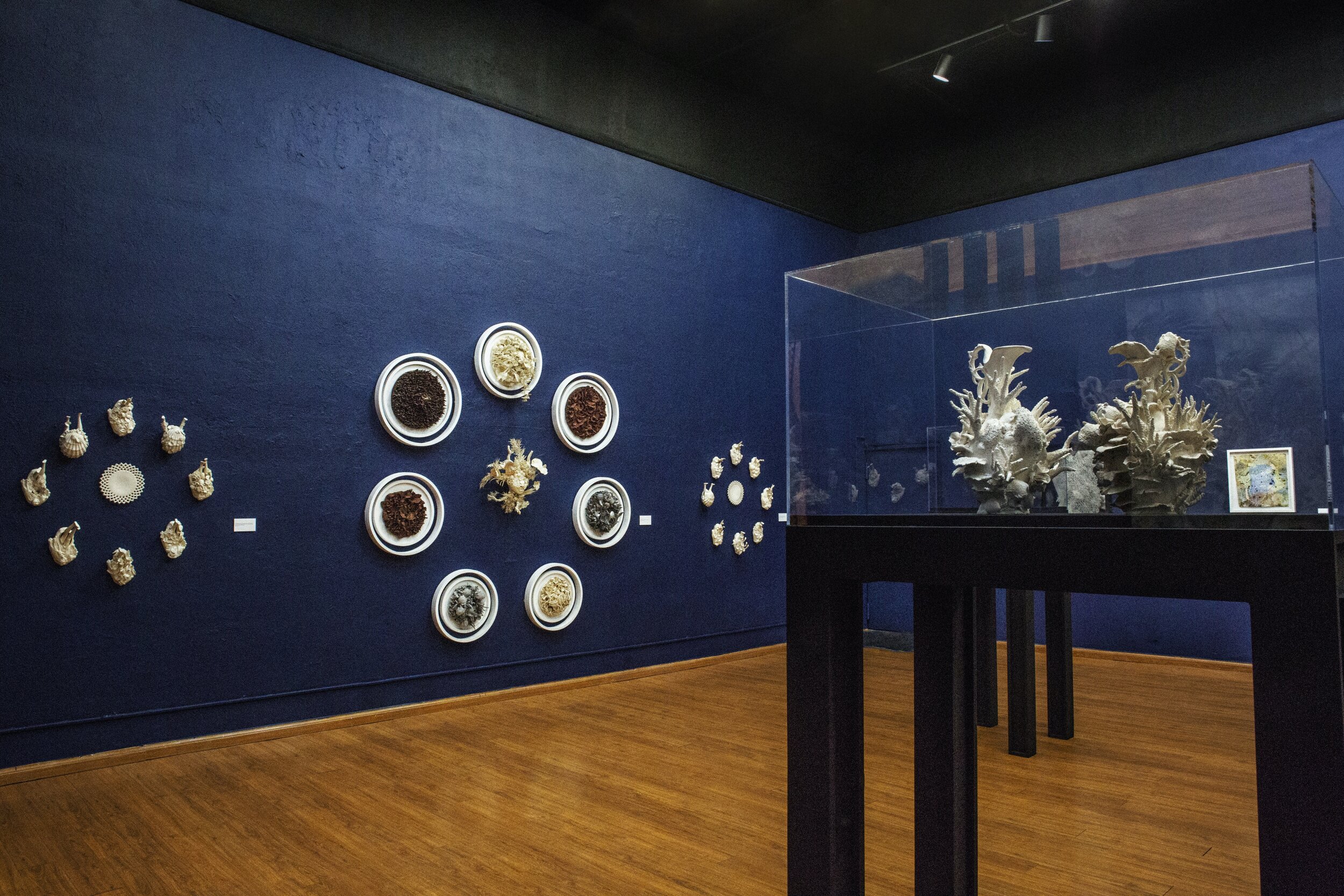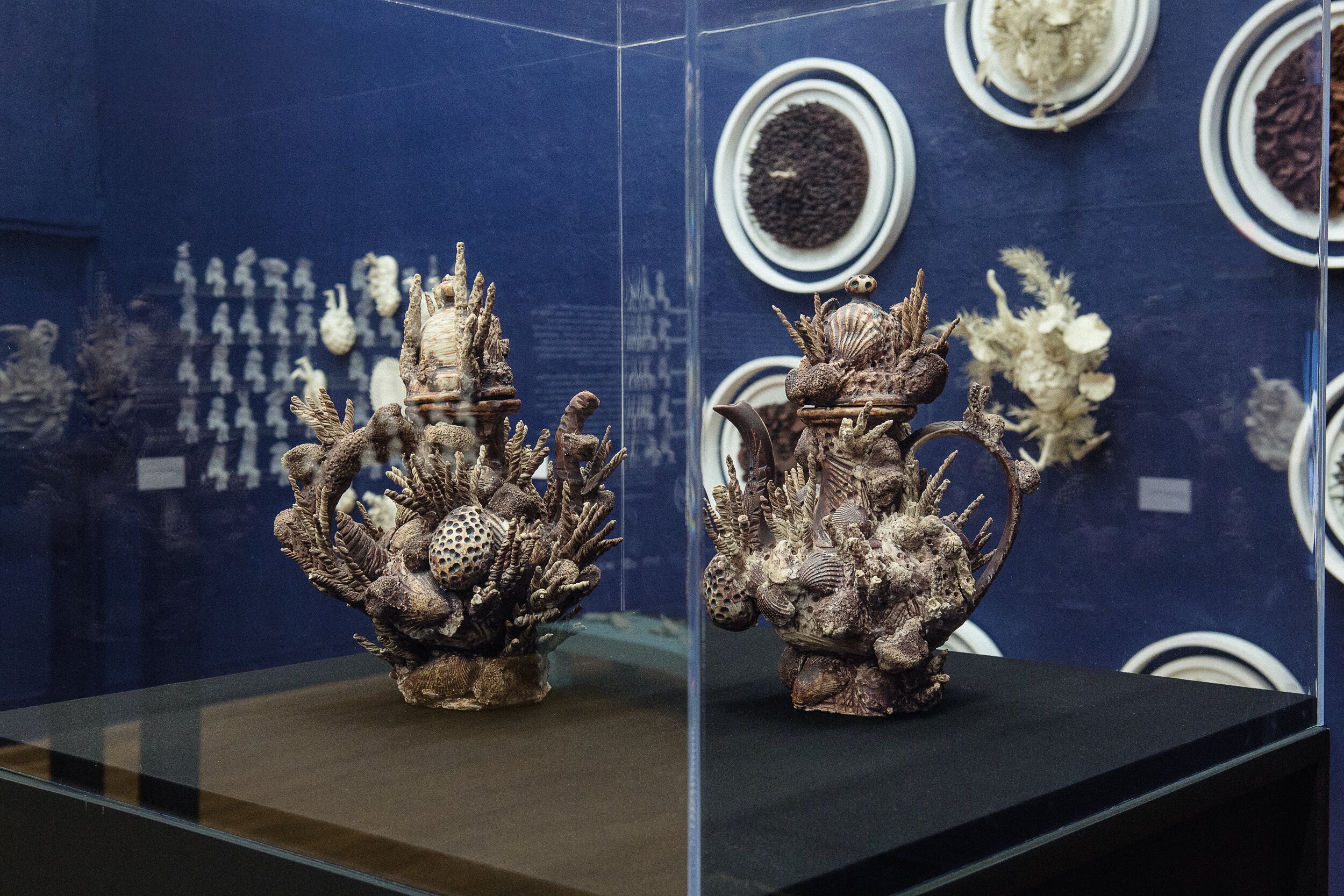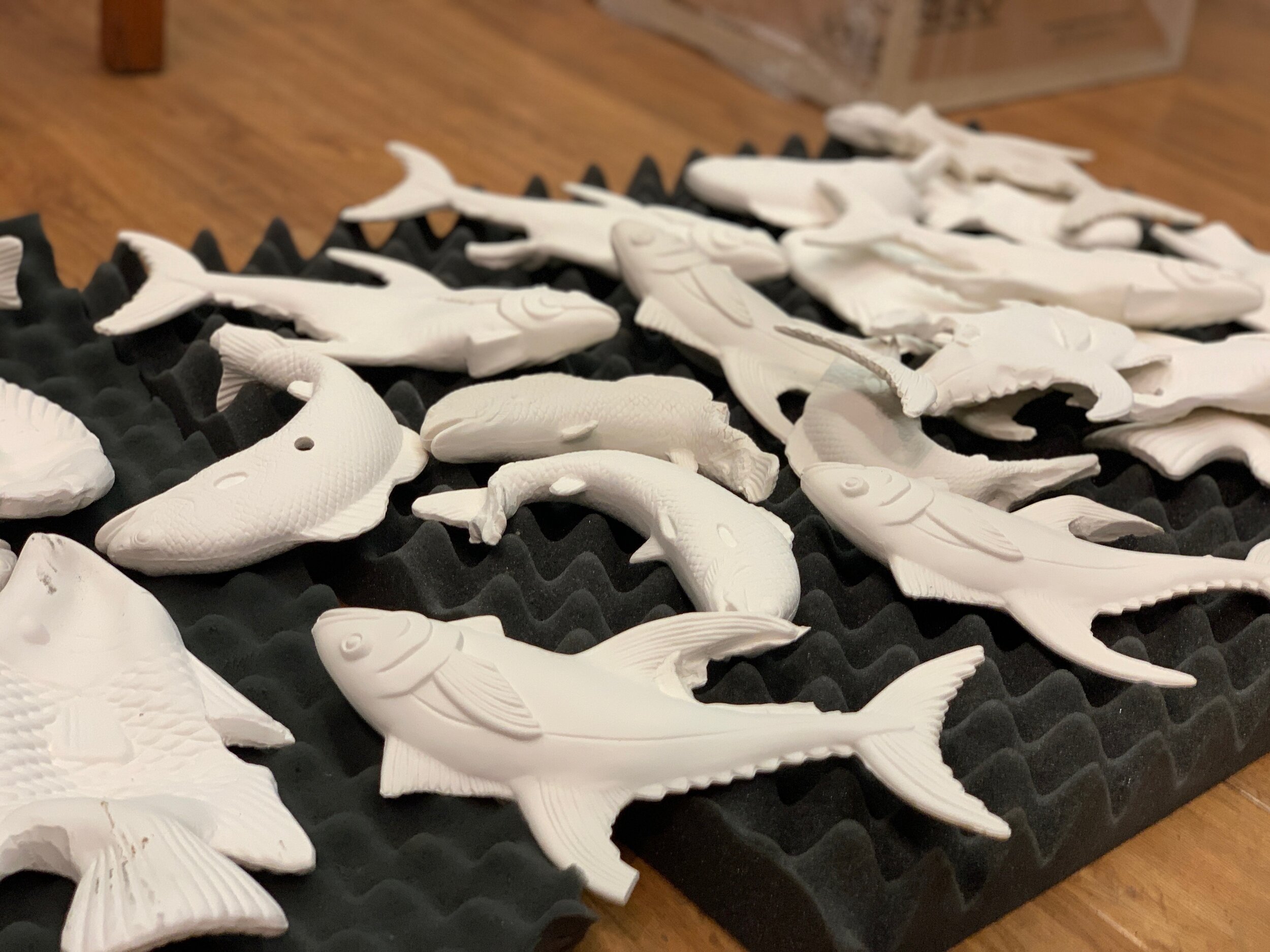WaveMaker Grantee: Morel Doucet
Written by Morel Doucet and Locust Projects
Interview with the Artist
Tell us about your WaveMaker project:
My WaveMaker grant support culminated in the exhibition "White Noise: When Raindrops Whisper & Moonlight Screams in Silence," addressing issues of socioeconomic disparity, colorism, and the demise of our coral reef systems and marine biodiversity through climate change. The exhibition title is an allegory of language rooted in magical realism while decoding notions of colonial trauma and societal critique. The exhibition explored the discourse about communities of color plight for change and equal excess, often using allegory to communicate the disparity between necessity and survival.
The exhibition started as a response to the climate crisis in South Florida from blue-green algae, red tides, and the die-off of marine life along both coasts. I used various data and charts from marine and environmental scientists to study the destruction around the state. Based on that data, I started building three-dimensional ceramic work to illustrate this narrative so that the everyday person could understand the impact climate change was having around our state.
As the body of work developed, it was important that I collaborate with a curator and exhibition venue centered in the black community. I reached out to Mikahile Solomon, Director of Prizm Art Fair and the African Heritage Cultural Arts Center. My goal for the exhibition was to develop a holistic body of work where communities of color in Florida were the centerpoint in conversations about seawater rise, climate change, and emergency preparedness.
What was the easiest aspect of this project? What was the most challenging? Did you learn something new? What do you wish you had done differently? What went perfectly?
I had some degree of doubt if my project would manifest itself into a comprehensive exhibition. The work itself was labor-intensive and time-consuming. Throughout my production year, I learned that being persistent and setting tangible goals was the key to achieving an ambitious exhibition concept.
Working with Mikahile Solomon, and the African Heritage Cultural Arts Center staff was very rewarding. I learned more about the nuances of curating an exhibition; from drafting the exhibition statement, art-handling and installation - aspects artists may under-appreciate in the production of an exhibition.
In the end, I was pleased with the outcome of my exhibition. I was able to bridge conversations with communities of color on the topic of climate change, seawater rise, and emergency preparedness in the event of a climate-exodus from South Florida. During the opening night reception, the African Heritage Cultural Arts Center averaged about 200+ attendees in collaboration with Prizm Art Fair, Sugar Cane Magazine, and social media promotion.
I hope this exhibition can be reimagined into a traveling exhibition throughout Florida and other communities of color that are marginalized and voiceless on issues of climate change and seawater rise.
Tell us what you're most excited about as a result of this project? Has it inspired a new work, collaborations, direction? Has it brought new opportunities for expanding it through other grants or exhibitions? What, where, and when? Tell us more...
After the exhibition at the African Heritage Cultural Arts Center, I am now confident to approach a second solo exhibition. Water grieves in the six shades of death, is a series of mixed media drawings that examine the realities of climate-gentrification, migration, and displacement within South Florida's Black diaspora. The title is rooted in magical realism, juxtaposing water as a body containing historical trauma, cultural dissonance, and active memory.
Within the past two years, I've been exploring Little Haiti, Overtown, Allapattah, and Liberty City to gather various flora and fauna from these communities to create ecological drawings in the forms of abstract portraiture of the residents that live in these districts. When I explore each neighborhood, I see they are in some way, sacred to the people who live there. The land harbors their cultural history, legacies, and shared nostalgia.
Within the last decade developers have been aggressively gentrifying these neighborhoods for elevation and land value; which causes the displacement due to rising rents and property tax. As a result, these communities are changing rapidly. I want to explore the theme of climate-gentrification in South Florida. In the event these Black bodies cease to exist with the threat of climate-gentrification, the land we inhabit still holds our cultural memories and genetics. Tropical foliage and front yard gardens are like gatekeepers of time - they anchor the dreams and hopes of the people.
4. In one sentence - what one thing about doing this project will stay with you?
“Patience is not the ability to wait, but the ability to keep a good attitude while waiting.”
My project was the accumulation of 5 years of research, planning, and prototype building. There were moments of doubt and a sense of failure during the process. What sustained and inspired me was being surrounded by like-minded artists and former professors for guidance and support.
ABOUT THE ARTIST
Morel Doucet b. 1990 is a Miami-based multidisciplinary artist and arts educator that hails from Haiti. He employs ceramics, illustrations, and prints to examine the realities of climate-gentrification, migration, and displacement within the Black diaspora communities. Through a contemporary reconfiguration of the black experience, his work catalogs a powerful record of environmental decay at the intersection of economic inequity, the commodification of industry, personal labor, and race.
Doucet’s Emmy-nominated work has been featured and reviewed in numerous publications, including Vogue Mexico, Oxford University Press, Hyperallergic, Luxe Magazine Miami, Biscayne Times, and Indulge Magazine. He graduated from the New World School of the Arts with the Distinguished Dean’s Award for Ceramics. From there, he formalized his education at the Maryland Institute College of Art, receiving his BFA in Ceramics with a minor in creative writing and concentration in illustration.
Doucet has exhibited both in the US and abroad, including a solo show at the African Heritage Cultural Arts Center, Miami, FL; National Council on Education for Ceramic Arts, Pittsburgh, PA; American Museum of Ceramic Art, Pomona, CA; Museum of Contemporary Art North Miami; Flaten Art Museum, St. Olaf College, São Tomé et Príncipe, Haitian Heritage Museum, Miami, FL; Patricia & Phillip Frost Art Museum, Miami, FL, and the Havanna Biennial.
His current endeavor as the Curriculum and Tour Coordinator at the Institute of Contemporary Art, Miami (ICA MIAMI), is helmed by an interest in immersing young audiences personalized courses that instigate curiosity, sensory perception, and visual literacy.
Morel Doucet received a Cycle 4 WaveMaker Grant in 2018. Since 2015, WaveMaker Grants have awarded $399,000 in grants to 77 Miami’s most visionary artists, collectives, and curators.
WaveMaker Grants at Locust Projects is made possible by support from the Andy Warhol Foundation for the Visual Arts and is part of the Warhol Foundation's Regional Regranting Program. Part of a national network of Warhol-initiated regranting programs, WaveMaker Grants is the first in the southeast. For more information about the Warhol Foundation's Regional Regranting Program, please click here.







